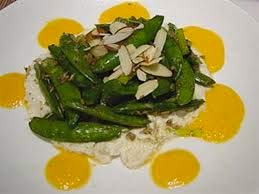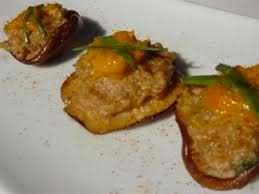Restricted Calorie Diet
How many times did your mother tell you to eat up because kids living in a place you weren’t going to visit anyway were starving? How many times did you respond by saying, “Why don’t you send this plate to Ethiopia?” Believe it or not, the child’s wish to not eat is sometimes more nutritionally appropriate than the mother’s position.
According to the results of a long-term rhesus monkey study from Wisconsin, modest reductions in daily calories can help primates live longer and healthier. The monkeys were divided into normal and reduced calorie diet groups. Apparently, 37 percent of the monkeys in the regular group died of age-related conditions as opposed to 13 percent of the dieting group. The research is not over, but there is an indication that a very healthy diet of fewer calories might add years to your life.
The researchers reduced the dieting monkeys’ calorie intake by 30 percent, but took steps to make sure that all necessary nutrients were still consumed. The calorie-cut monkeys didn’t just live longer; they had approximately half the heart disease and cancerous tumors of the non-dieting group. Additionally, the rates of diabetes and brain atrophy, conditions associated with aging, were greatly reduced in the dieting group.1
We, at Nancy Appleton Books, applaud this research with both cheers and a “We told you so.” We have commented on food intake and other aspects of our diet making us fat, especially in our recent book Suicide by Sugar.
A sedentary lifestyle, going from bed to work in front of a screen to entertainment in front of another screen and back to bed, leads to lack of exercise and overeating. Too often, people living this lifestyle eat processed foods that are high in sugars, especially fructose. Fructose triggers hunger2 which feeds a vicious cycle of eating more and more, making people fat and unhealthy. Our position has always been to cut back on sugar and preservatives in favor of whole foods, which represents the kind of caloric reductions mentioned in the Wisconsin monkey study.
What the average person reading this article needs to know before applying a 30 percent daily calorie reduction to his or her diet is what is in the monkey chow normally fed to the primates in captivity. Rhesus monkeys in the wild eat insects, fruit, worms, leaves and roots, usually after exerting some energy to get the food. We have it directly from the Wisconsin researchers that the “animals ate a semi-purified, well-defined pelleted diet consisting of 15 percent protein (lactalbumin), 10 percent fat (corn oil) that also contains sucrose, corn starch, dextrin, cellulose and a vitamin and mineral mix. In addition, each animal receives a piece of fresh fruit (~100 kcal) daily.”
At this point, we need to refer the reader to experiments conducted on cats by Francis Pottenger Jr., MD, between the 1930s and 1980s that show how the modern processed diet is in and of itself a cause for alarm.
Pottenger’s cats were given a diet of raw milk, cod liver, and either raw or cooked meat. The cooked meat cats showed generations of abnormalities that, left alone, killed off the cat breeding after three generations and took four generations of a proper diet to heal in the cat offspring.3 While it is true that subsequent replication studies suggest a taurine deficiency more than cooking as the cause of the symptoms shown by Pottenger’s cats, which included heart disease, bad vision, lack of balance, and wild variations in birth weight, there is some link between our diet and the symptoms we feel.4
Pottenger’s cats apply to the monkey study in this way: the standard captive monkey diet already has a lot of fat, heart disease and other ailments built in. Making a 30 percent cut in this non-whole foods diet will help because a lot of sugar is being cut out and every little bit helps. More research is obviously needed to see if monkeys and humans would benefit as much from calorie reduction when they go on a diet of more whole foods than not, or if these primate studies just tell us to cut the sugar, excess carbohydrates, preservatives, and other time bombs in our diet to achieve the same effect.
Another minor issue in applying the monkey study to our diet is the distressing fact that portion sizes in human meals keepincreasing. Some food items, like chocolate chip cookies, increased 700 percent between 1982 and 2002.5 We need to find out which year to use in setting an appropriate base meal size, because while any reduction from a high-calorie diet is an improvement, it represents a false hope if the underlying average meal size continues to grow.
However, while there are holes left to fill concerning sugar and carbohydrates, the first bit of research on overeating and longevity is in. Eating a little less without depriving yourself of nutrients will go a long way to extending your life and making you healthier. But there are no magic pills for your health, says Dr. David Finkelstein of the National Institute of Aging, a funding source for the Wisconsin study.
“Watch what you eat, keep your mind active, exercise and don’t get hit by a car,” Finkelstein says.
Sources:
- Coleman, RJ, Et. Al. “Caloric Restriction Delays Disease Onset and Mortality in Rhesus Monkeys” Science 325;(5937): 201-204
- Tannous, dit El Khoury D. et. al. “Variations in Postprandial Ghrelin Status Following Ingestion of High-Carbohydrate, High-Fat and High-Protein Meals in Males.” Annals of

 a food processor:
a food processor: